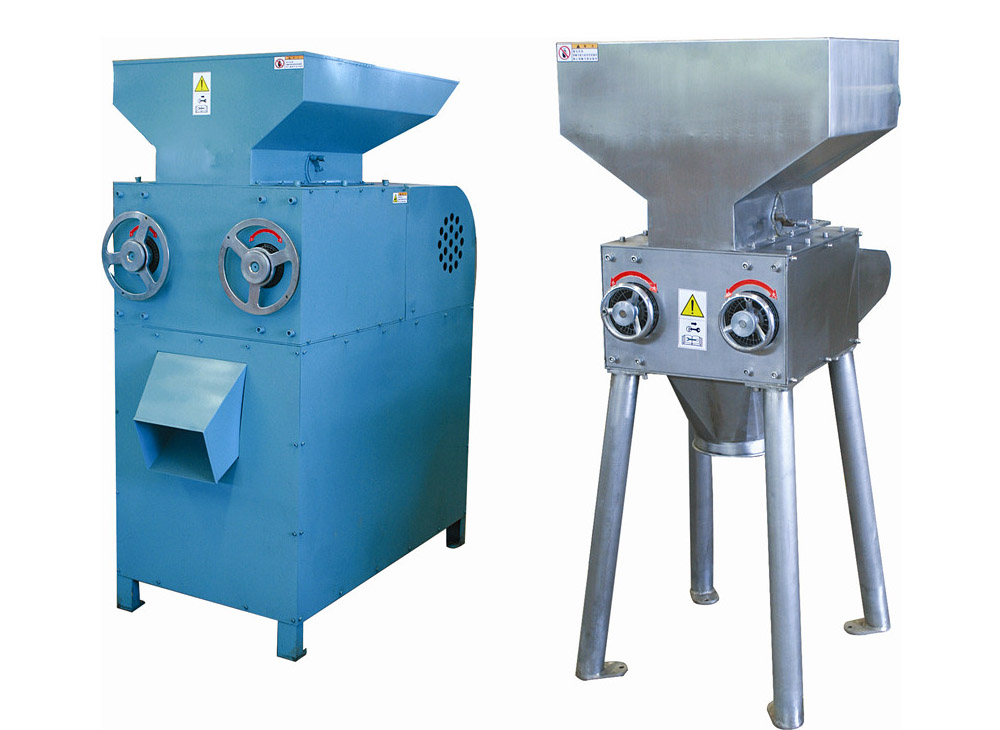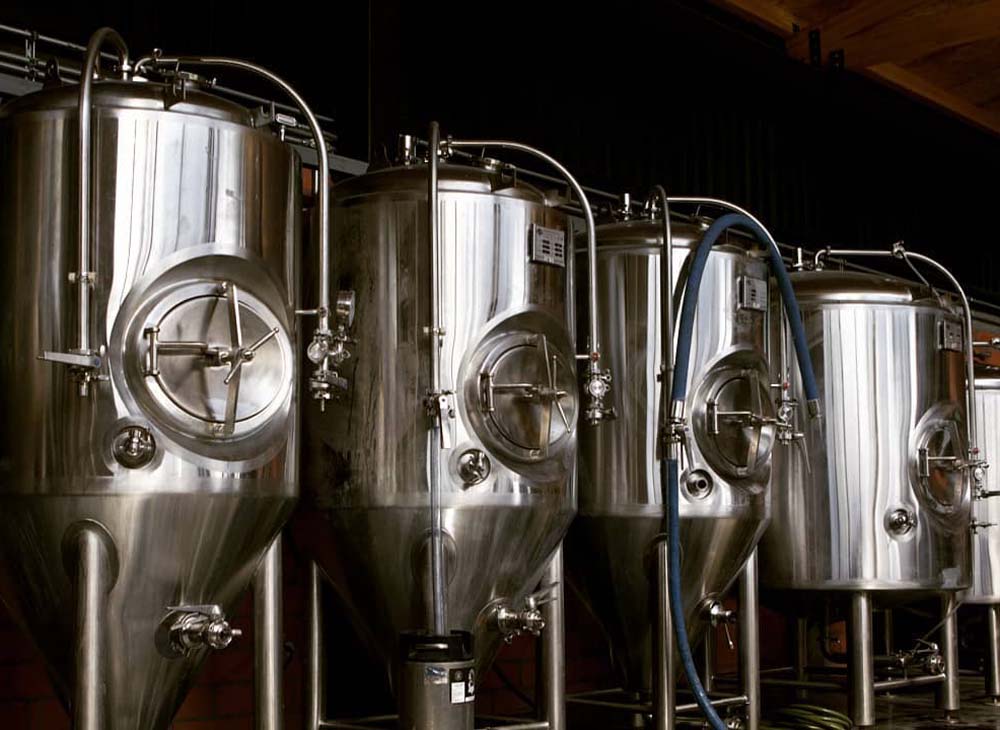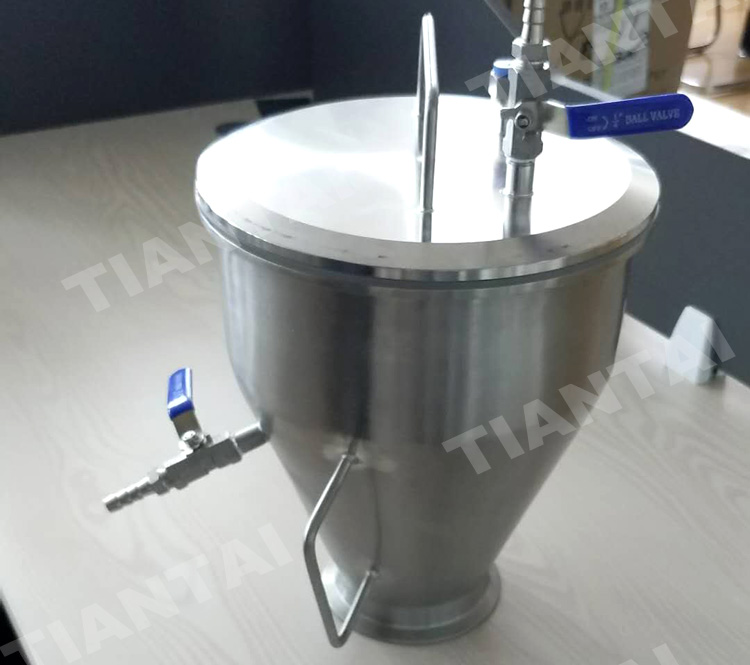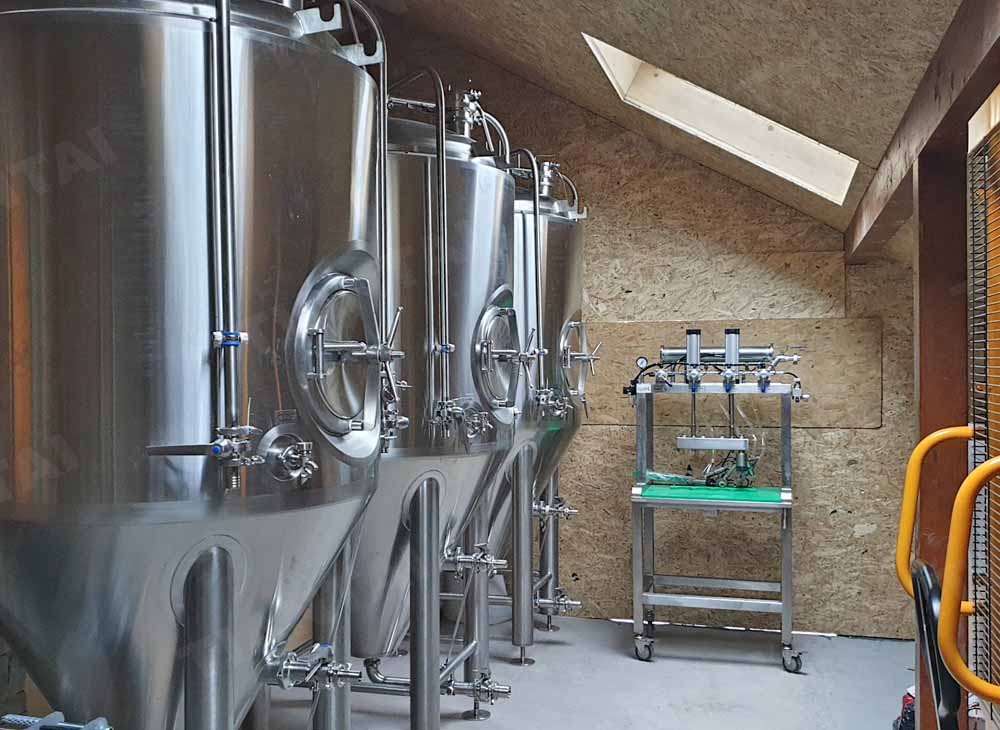What is the malt roller mill and how does it function in the brewery
- Aug 20, 2021
- 117
- tiantai
Roller Mill is the most typical gadget for squashing malt as well as grain right into grist in prep work for the mash. Roller mills vary by the number of tandem operating rollers and also by the therapy of the malt or grain prior to as well as throughout the milling procedure. The rollers are level or, in more recent mills, serrated, as well as they revolve at varying or the same rates.
The time depends on the size of the rollers, the wetness material of the malt, the roller rate, and also the kind of roller surface area. In some roller mills, the grist might be divided by dimension as well as some grist portions might be sent out with the mill a 2nd or also 3rd time.

Both rollers rotate at the very same rate. The malt passes with the rollers just as soon as.
Malt passes via the very first collection of rollers as well as is routed to a filter that allows better grist autumn with straight. The continuing to be, coarser grist is routed to the 2nd set of rollers.
After the initial set of rollers, the grist is divided right into 3 portions by a collection of 2 screens, where the finest portion, which is primarily flour, is routed away for collection. A coarser portion bypasses a 2nd set of rollers and also is sent out straight to a 3rd set to be crushed once more, whereas the coarsest portion, which is composed of husks with endosperm residues, is routed to the 2nd set, likewise to be grated once again. The rugged portion from this milling action is after that guided to the 3rd set of rollers to be grated a 3rd time.
The fractioning that is feasible with 4- as well as six-roller mills permits the optional splitting up of husks from the grist. The husks can after that be included in the mash later on, decreasing the leaching of astringent polyphenols. When including husks to the mash, nonetheless, it is vital that the husks be devoid of endosperm residues, due to the fact that these consist of unconverted starches that might wind up in the wort and also beer as hazes.
Some contemporary roller mills problem the malt with water prior to the milling procedure. One drawback is a boosted danger of microbiological contamination from wet down payments inside the mill itself. These mills, for that reason, have to be cleaned up extensively after usage.
While doing so called damp milling, the grist is successfully soaked in water up until it has as high as 30% dampness. Done effectively, the husks end up being flexible as well as the endosperm is ejected throughout milling making use of an easy two-roller mill.
Roller mills vary by the number of tandem operating rollers as well as by the therapy of the malt or grain prior to and also throughout the milling procedure. The time depends on the size of the rollers, the wetness material of the malt, the roller rate, and also the kind of roller surface area. In some roller mills, the grist might be divided by dimension and also some grist portions might be sent out via the mill a 2nd or also 3rd time.
A coarser portion bypasses a 2nd set of rollers and also is sent out straight to a 3rd set to be crushed once again, whereas the coarsest portion, which is composed of husks with endosperm residues, is routed to the 2nd set, additionally to be grated once again. Some modern-day roller mills problem the malt with water prior to the milling procedure.
Edited by Nicole
Sales manager of Tiantai company
Email: [email protected]
The time depends on the size of the rollers, the wetness material of the malt, the roller rate, and also the kind of roller surface area. In some roller mills, the grist might be divided by dimension as well as some grist portions might be sent out with the mill a 2nd or also 3rd time.

Both rollers rotate at the very same rate. The malt passes with the rollers just as soon as.
Malt passes via the very first collection of rollers as well as is routed to a filter that allows better grist autumn with straight. The continuing to be, coarser grist is routed to the 2nd set of rollers.
After the initial set of rollers, the grist is divided right into 3 portions by a collection of 2 screens, where the finest portion, which is primarily flour, is routed away for collection. A coarser portion bypasses a 2nd set of rollers and also is sent out straight to a 3rd set to be crushed once more, whereas the coarsest portion, which is composed of husks with endosperm residues, is routed to the 2nd set, likewise to be grated once again. The rugged portion from this milling action is after that guided to the 3rd set of rollers to be grated a 3rd time.
The fractioning that is feasible with 4- as well as six-roller mills permits the optional splitting up of husks from the grist. The husks can after that be included in the mash later on, decreasing the leaching of astringent polyphenols. When including husks to the mash, nonetheless, it is vital that the husks be devoid of endosperm residues, due to the fact that these consist of unconverted starches that might wind up in the wort and also beer as hazes.
Some contemporary roller mills problem the malt with water prior to the milling procedure. One drawback is a boosted danger of microbiological contamination from wet down payments inside the mill itself. These mills, for that reason, have to be cleaned up extensively after usage.
While doing so called damp milling, the grist is successfully soaked in water up until it has as high as 30% dampness. Done effectively, the husks end up being flexible as well as the endosperm is ejected throughout milling making use of an easy two-roller mill.
Roller mills vary by the number of tandem operating rollers as well as by the therapy of the malt or grain prior to and also throughout the milling procedure. The time depends on the size of the rollers, the wetness material of the malt, the roller rate, and also the kind of roller surface area. In some roller mills, the grist might be divided by dimension and also some grist portions might be sent out via the mill a 2nd or also 3rd time.
A coarser portion bypasses a 2nd set of rollers and also is sent out straight to a 3rd set to be crushed once again, whereas the coarsest portion, which is composed of husks with endosperm residues, is routed to the 2nd set, additionally to be grated once again. Some modern-day roller mills problem the malt with water prior to the milling procedure.
Edited by Nicole
Sales manager of Tiantai company
Email: [email protected]




.jpg)